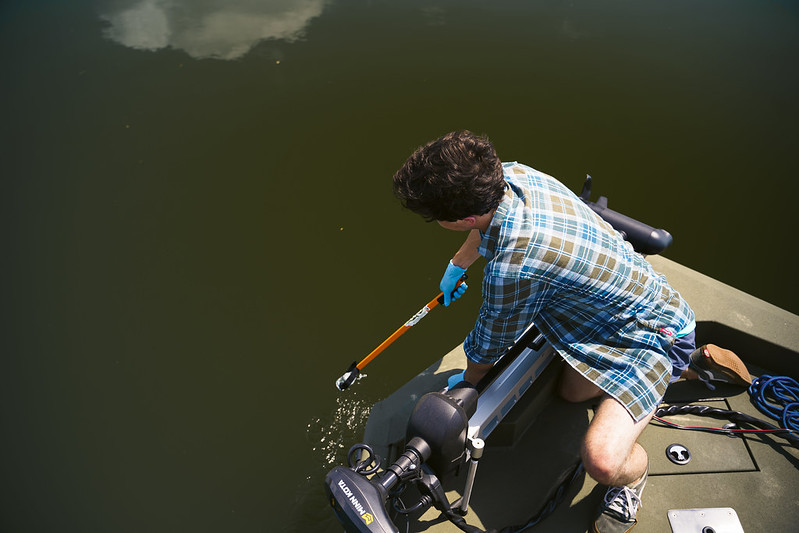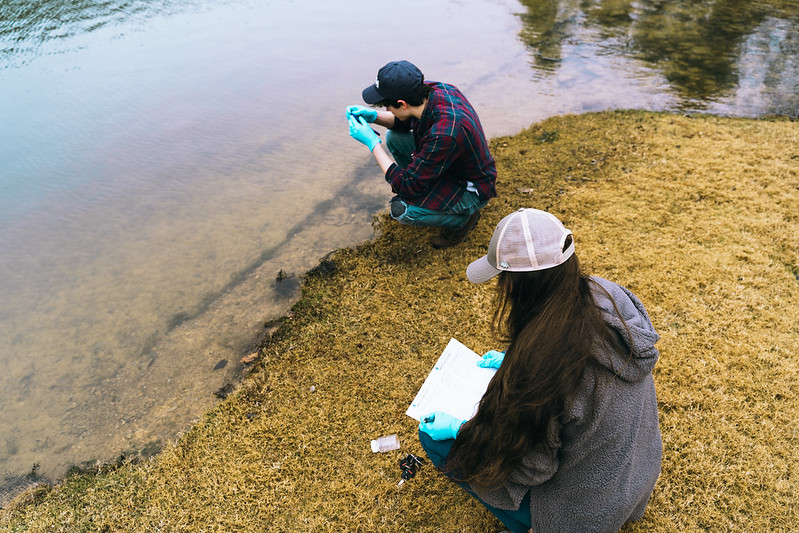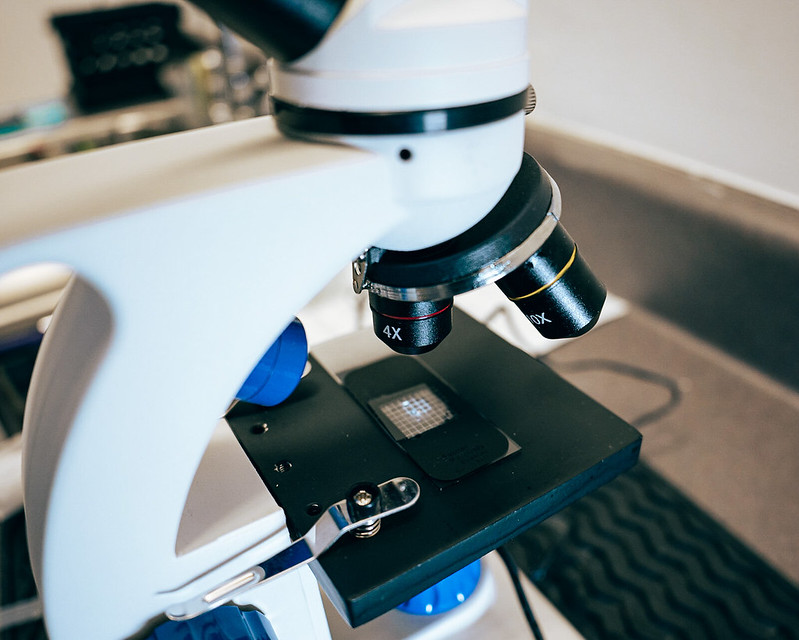The Problem: Too Many Nutrients
When you hear the word pollution, what do you think about? Do you visualize people dumping their garbage and week-old food scraps into the river? Is it a discharge pipe, pumping suspiciously dark liquid into a stream of clear, untouched water? Or is it something more subtle, hidden to the eye of the average person like an abundance of forever chemicals floating just beneath the surface? While all of these examples are an unfortunate, and very real consequence of human expansion, activity, and recreation; the mighty Coosa has been battling something more akin to the last example. Hidden behind a shield of molecular camouflage, this type of pollution is only revealed through vigilant and regular testing, or if we’re unlucky, it will grow to the point that its existence and the effect it has on its environment is undeniable.
Naturally abundant in the environment and unarguably deserving of a grandiose introduction is nutrients, or in this case, “nutrient pollution”. Nutrients, much like in humans, are a necessary and natural part of any body of water. While the nutrients in a body of water differ from what humans use, aquatic plants and microorganisms use them in a similar capacity to us. Aquatic weeds, plants, and algae uptake the nutrients or “eat” them so that they can keep growing and sustain themselves, just like a person sitting down for lunch! However, it is important to note that just like in humans, too many nutrients can be a bad thing. When we eat too much, our stomachs may hurt or begin to cramp up and metaphorically the same can be said about bodies of water. When too many nutrients are added to a waterbody, it can become an issue impacting water quality as algae and aquatic weeds grow too excessively which can lead to a multitude of other negative effects on the environment.
Too many nutrients within a body of water can lead to an excess of growth of aquatic weeds, and especially algae. When excess growth occurs, this can be a big problem for the aquatic environment as the natural equilibrium within can shift. This shift can cause some species of plant to die off or get taken over by what is growing excessively. Algae can also grow excessively when conditions are just right which can lead to an arguably bigger problem: A harmful Algae Bloom or ‘HAB” for short. HAB’s typically occur in shallow, slow moving, and warm water especially when an excess of nutrients is present. What makes HAB’s especially dangerous is the potential for them to fill the water column with algae specific toxins. These toxins are in fact dangerous and can negatively impact the health of plants, fish, animals, and even humans.
What We’re Doing About It
Historically, the Coosa has been affected by nutrient pollution, whether it’s from wastewater discharges, concentrated animal feeding operations, or agricultural runoff. This along with the fact that Alabama’s state agencies are not required to test its water for nutrients, specifically phosphorus and nitrogen. This has led our organization to a new avenue of study of the Coosa. Out of necessity, we began expanding our nutrient and algae monitoring program in late 2021 and have only expanded it further in 2022 with the Coosa River named the Fifth Most Endangered River in the US by American Rivers.
With the help of the NOAA, we began taking biweekly water samples at two local sites and testing them for the presence of algae in early January. Once we gained confidence in our testing methods and as the months began to warm, we eventually expanded those two sites into seven total sites in early May across each lake on the Coosa chain. Due to our capacity at the time, we chose to prioritize one to two sites on each major reservoir along the Coosa. Our designation of sites was based on what we had learned prior in the year as well as the geographical features present at each site. We prioritized slower moving, shallower areas of the reservoirs as that is typically where HAB’s will occur.
After May, we began testing these sites once a week, however we felt that it was still not enough testing to truly assure safe clean waters (due to no nutrient monitoring by the state, a warming climate, and excessive amounts of nutrient pollution). We decided to conduct full algae intensives on each major reservoir throughout the summer months along with our weekly tests. Beginning with Lake Mitchell, the team hopped on The Olive II, and began taking algae samples from dam to dam, stopping at locations that were predetermined using topographical data. We took a total of 16 samples from Lake Mitchell during our first intensive and processed all of them the following day. Over the following summer months, we conducted the same type of intensives, dam to dam, on Neely Henry, Logan Martin, Jordan, and Lay Lake. Throughout the summer, we collected over 150 total algae samples along our 250 miles of watershed.
Fortunately, testing for algae is relatively pain free, though it may take a while to go through every sample. To analyze algae, we create a microscope slide using a sample of water. We then look at it under a microscope to visually try to identify live species of algae. If we did have a positive indication of harmful algae being present, we would then contact the NOAA with pictures of what we found. They would then provide further confirmation and instructions on how to handle the bloom if a bloom did occur. Finding positive confirmation of a species in our sample does not mean that a bloom was going to happen, but it does mean that the potential for one to happen is greater in the area that we gathered the sample.
# of Algae Sites Monitored
# of Algae Samples Collected
It is important to understand that not all algae is bad, and nearly every species plays a critical role in their environment. The true problem occurs when very specific species of algae begin to grow excessively.
Currently, there are only two species of algae that we have identified as having the potential to create harmful algae blooms and they are known as “Cyanobacteria” and “Euglena Sanguinea”. The term “Cyanobacteria” encompasses five different species that we try to identify, however all of which create toxins. Out of our 150 samples, only one came back with positive confirmation, however it was not a bloom. Euglena Sanguinea is an outlier, but we quickly learned that it also has the potential to bloom and create toxins, as we had to handle a bloom of Euglena in our watershed in early August. Fortunately, most toxic algae blooms typically dissipate in a few weeks, depending on conditions, but they should nonetheless be treated with caution. Despite how long they last, they still have a high potential to harm animal and human life.
Our Algae Sample Locations
This post was written by Lucas Allison, our awesome Field Coordinator!









